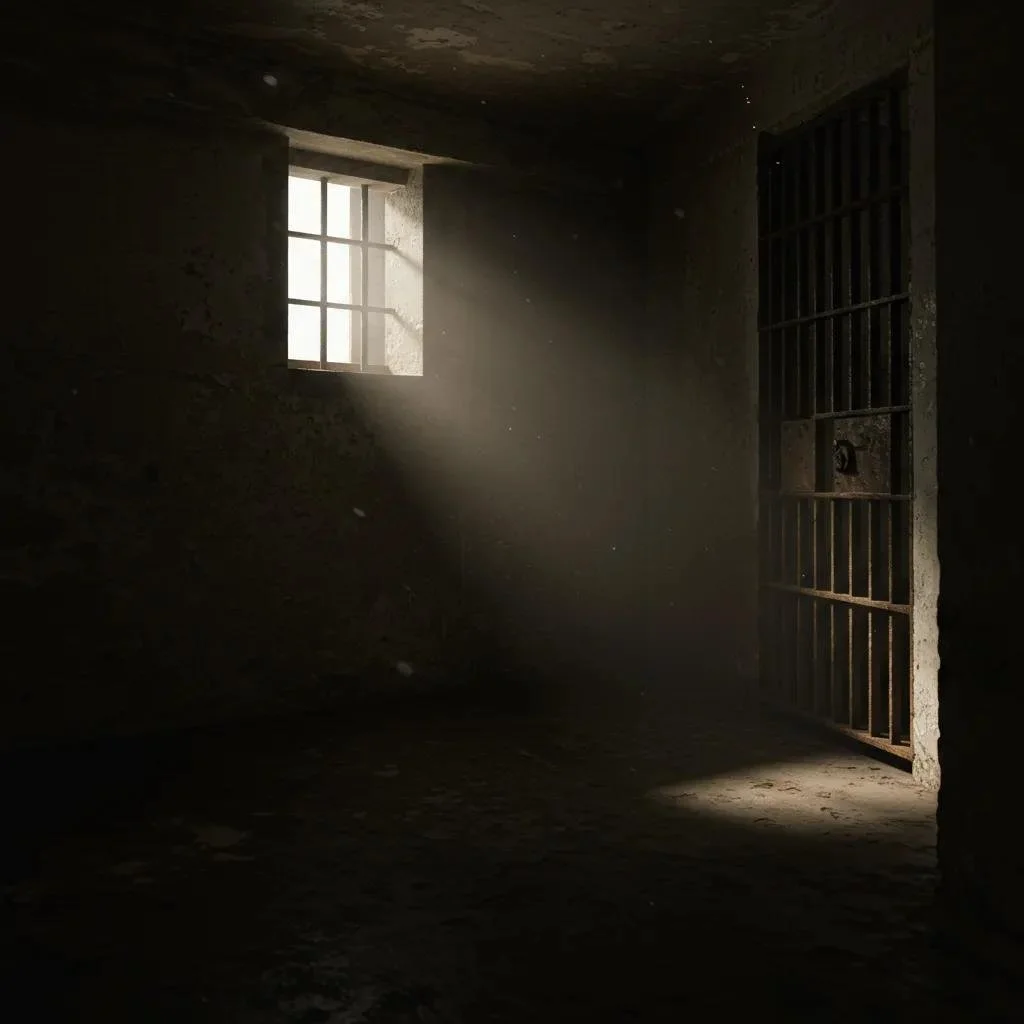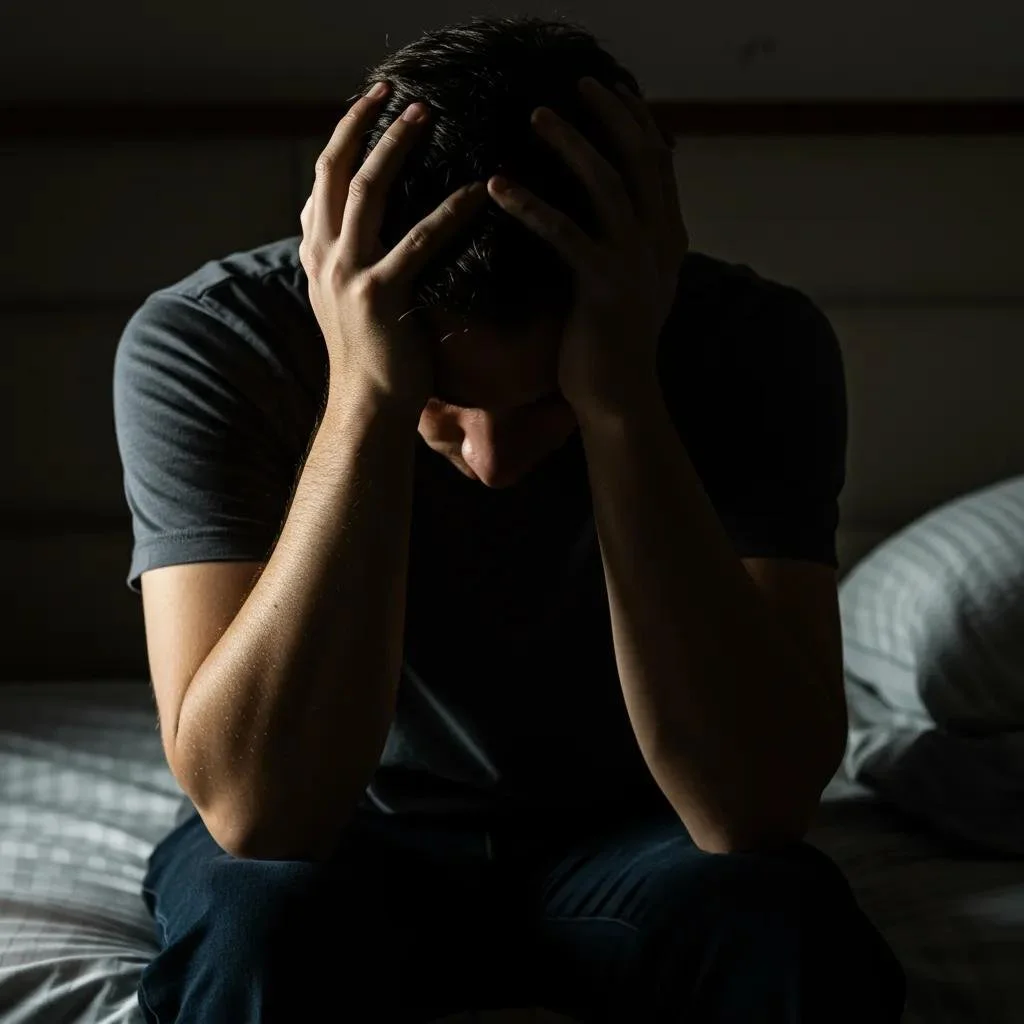The Silent Struggle: Understanding Solitary Confinement and Its Mental Health Impact
On a typical day in 2019, more than 75,000 people—over 6 percent of the U.S. prison population—were held in prolonged isolation, triggering a rising mental health crisis behind bars. Solitary confinement imposes extreme sensory deprivation and social isolation that often lead to anxiety, depression, paranoia and even psychosis. This article examines the psychological effects of restrictive housing, explores suicidal and self-harm risks, unpacks human rights and legal frameworks, highlights evidence-based alternatives, presents key statistics and demographic patterns, details neurological consequences, and addresses the well-being of correctional staff exposed to isolation practices. By defining each core issue, explaining underlying mechanisms, and illustrating viable solutions such as therapeutic diversion units and individualized care plans, readers will gain actionable insight into reforming incarceration protocols and supporting mental health in prisons.
What Are the Psychological Effects of Solitary Confinement?
Solitary confinement refers to the enforced separation of an incarcerated person in a cell for 22 to 24 hours a day, with minimal human contact. This restrictive housing practice causes sustained stress responses, disrupts emotional regulation, and diminishes cognitive functioning. For example, exposure to an empty cell for weeks can trigger hypersensitivity, intrusive thoughts and deficits in concentration. Understanding these psychological effects is essential for correctional policymakers and mental health practitioners aiming to mitigate harm and develop humane treatment models.
How Does Solitary Confinement Cause Anxiety, Depression, and Psychosis?
Solitary confinement provokes acute anxiety by activating a persistent fight-or-flight response to isolation. The absence of meaningful interaction undermines emotional resilience, leading to severe depressive symptoms such as hopelessness and sleep disturbance. In extreme cases, prolonged sensory deprivation can induce psychosis with hallucinations and disorganized thought patterns. Chronic stress elevates cortisol levels and impairs neurotransmitter balance, generating a feedback loop that exacerbates mood dysregulation and perceptual distortions.
What Is SHU Syndrome and How Is It Diagnosed?
SHU Syndrome, first identified by Dr. Stuart Grassian, describes a cluster of psychiatric symptoms emerging after weeks in a Special Housing Unit. It includes hypersensitivity to stimuli, paranoia, memory lapses and cognitive impairments. Diagnosis relies on clinical observations of behavioral changes, standardized psychiatric assessments and exclusion of pre-existing mental disorders. Accurate identification of SHU Syndrome enables targeted interventions, such as structured therapy and gradual reintegration programs.
How Does Sensory Deprivation Affect Cognitive Function and Emotional Well-being?
Sensory deprivation in solitary confinement restricts auditory, visual and tactile stimulation, leading to neural under-activation in the prefrontal cortex and hippocampus. This under-stimulation impairs memory consolidation and executive functioning, resulting in attention deficits and disorientation. Emotionally, lack of sensory input erodes coping abilities and intensifies feelings of loneliness and despair. Restorative strategies focus on structured sensory enrichment, including light therapy and guided physical activities, to rebuild neural networks and stabilize mood.
How Does Solitary Confinement Increase Suicide and Self-Harm Risks?
Solitary confinement dramatically amplifies suicide and self-harm risks by magnifying feelings of despair and hopelessness. The enforced separation from supportive social networks removes protective factors that typically reduce self-injurious behaviors. Understanding the prevalence, underlying risk factors and effective intervention practices is crucial to saving lives in restrictive housing settings.
What Are the Suicide Rates and Risk Factors in Solitary Confinement?
Suicide accounts for nearly half of all inmate deaths in solitary units, despite isolated individuals comprising only 6–8 percent of the overall prison population. Key risk factors include prior mental illness, length of isolation exceeding 15 days, and absence of meaningful human contact. Inmates subjected to sensory deprivation often experience cognitive distortions that increase impulsivity and risk-taking, further elevating self-harm potential.
How Does Mental Illness Overrepresentation Affect Suicide Risk?
More than 50 percent of those in solitary confinement have diagnosed mental disorders—ten times the prevalence found in the general incarcerated population. This overrepresentation drives higher suicide rates as untreated psychiatric conditions worsen under isolation. Depression, PTSD and psychotic disorders magnify self-destructive ideation, making targeted mental health screening and continuous monitoring indispensable preventive measures.
What Crisis Intervention and Mental Health Screening Practices Are Effective?
Effective prevention combines proactive suicide risk assessments with 24/7 mental health availability. Crisis intervention teams trained in de-escalation and trauma-informed care can identify distress signals and offer immediate support. Regular psychiatric evaluations, peer support networks and scheduled out-of-cell therapy enhance emotional stability and reduce self-harm incidents. Integrating telepsychiatry expands access to specialists and ensures continuity of care even in remote facilities.
What Are the Human Rights and Legal Issues Surrounding Solitary Confinement?
Solitary confinement raises profound ethical and legal questions regarding humane treatment, proportionality and human dignity. International standards, constitutional protections, and national litigation have shaped evolving restrictions on prolonged isolation. Scrutinizing these frameworks clarifies obligations for correctional systems and underscores the imperative for reforms aligned with human rights law.
How Do the UN Mandela Rules Regulate Solitary Confinement?
The United Nations Standard Minimum Rules for the Treatment of Prisoners (Mandela Rules) prohibit solitary confinement exceeding 15 consecutive days and categorize extended isolation as torture. These rules define restrictive housing conditions, mandate regular medical reviews, and require alternatives for vulnerable inmates. Compliance with Mandela Rules fosters rehabilitation and deters the use of isolation as punitive excess.
Is Solitary Confinement Considered Torture or Cruel and Unusual Punishment?
International human rights experts and the UN Special Rapporteur on Torture have declared that prolonged solitary confinement constitutes cruel, inhuman or degrading treatment, and may amount to torture when exceeding 15 days. Judicial rulings in several jurisdictions have invoked constitutional bans on cruel and unusual punishment to limit or outlaw extended isolation, setting legal precedents for humane correctional practices.
What Advocacy and Reform Efforts Are Driving Change?
Grassroots campaigns, legal challenges and policy reforms spearheaded by human rights organizations have led to significant reductions in the use of solitary confinement across multiple states and countries. Initiatives such as litigation against unconstitutional practices, legislative caps on isolation duration, and community-based diversion programs promote systemic change. Continued advocacy drives awareness, shapes legislation, and supports the implementation of evidence-based alternatives.
What Are the Effective Alternatives to Solitary Confinement?
Reforming isolation practices requires scalable, humane alternatives that address behavioral needs while safeguarding mental health. Therapeutic diversion units, individualized care plans and staff training in de-escalation offer proven frameworks for reducing reliance on solitary cells and improving outcomes for incarcerated individuals.
How Do Therapeutic Diversion Units Work and What Are Their Outcomes?
Therapeutic diversion units provide a structured environment combining clinical therapy, life skills training and group support. Inmates participate in daily counseling sessions, cognitive-behavioral therapy and recreational activities designed to foster social engagement. Evaluations show a 40 percent reduction in disciplinary infractions and significant improvements in mood regulation and recidivism rates compared to traditional isolation units.
What Role Do Individualized Care Plans and Rehabilitation Play?
Individualized care plans tailor interventions to each person’s mental health profile, risk factors and rehabilitative goals. Components include regular psychiatric consultations, personalized coping strategies and gradual exposure to communal settings. Rehabilitation programs focusing on vocational training and education reinforce a sense of purpose and accelerate successful reintegration, reducing the need for punitive isolation.
How Can De-escalation Techniques and Staff Training Reduce Isolation Use?
Training correctional staff in verbal de-escalation, trauma-informed communication and crisis intervention promotes safe conflict resolution without resorting to isolation. Role-play exercises, scenario-based drills and ongoing supervision build confidence and empathy. Facilities reporting comprehensive staff development experience a 50 percent decline in solitary confinement placements and improved staff-inmate relations.
What Are the Key Statistics and Demographics of Solitary Confinement?
Accurate data on solitary confinement prevalence, demographic disparities and post-release outcomes informs policy decisions and targeted interventions. Examining these statistics reveals systemic inequities and long-term consequences for individuals subjected to prolonged isolation.
How Prevalent Is Solitary Confinement in US Prisons and Jails?
Roughly 80,000 to 250,000 people cycle through solitary confinement each year in the United States. On any given day, more than 123,000 inmates across prisons, jails and detention centers experience restrictive housing. This high turnover reflects both disciplinary practices and strategies to manage understaffed facilities, perpetuating a cycle of isolation.
Which Groups Are Disproportionately Impacted by Solitary Confinement?
Incarcerated people with mental illness, youth, LGBTQIA+ individuals and racial minorities face higher rates of isolation placements. More than half of those in solitary units have serious psychiatric disorders, while young people under 25 are twice as likely to be placed in isolation. Systemic biases and lack of alternative behavioral supports contribute to these disparities.
What Are the Long-Term Mortality and Recidivism Rates After Solitary?
Individuals who spent any time in solitary confinement are 78 percent more likely to die by suicide within a year of release and show a 24 percent higher recidivism rate compared to peers in general population units. These alarming post-release outcomes emphasize the need for effective reentry support and alternatives to prolonged isolation.
How Does Solitary Confinement Affect the Brain and Neurological Health?
Beyond emotional distress, solitary confinement triggers structural and functional brain changes that compromise cognitive abilities and resilience. Chronic isolation alters neural pathways, leading to deficits in memory, decision-making and emotional regulation that often persist after release.
What Brain Changes Occur Due to Prolonged Isolation?
Prolonged isolation causes hippocampal atrophy, reducing the brain’s capacity for learning and memory consolidation. Functional MRI studies reveal diminished prefrontal cortex activity, impairing executive functions such as impulse control and problem solving. These neurological alterations reflect the brain’s adaptive response to sensory deprivation and social disconnection.
How Do These Neurological Effects Influence Behavior and Mental Health?
Hippocampal shrinkage and frontal lobe hypoactivity manifest as memory lapses, poor decision-making and heightened reactivity to stress. Individuals frequently report difficulty concentrating, emotional volatility and increased vulnerability to mood disorders. These behavioral changes hinder successful community reintegration and underscore the importance of neural rehabilitation through cognitive therapy and environmental enrichment.
How Does Solitary Confinement Impact Correctional Staff Mental Health?
Correctional officers and medical staff in solitary units face unique stressors that affect their psychological well-being. Exposure to violence, constant vigilance and moral distress contribute to burnout, secondary trauma and elevated turnover rates. Addressing staff mental health is essential for maintaining safe and humane correctional environments.
What Psychological Challenges Do Staff Face Working in Solitary Units?
Staff working in restrictive housing often experience elevated anxiety, hypervigilance and compassion fatigue. The chronic stress of supervising inmates with severe mental illnesses without adequate support increases risk for burnout and post-traumatic stress symptoms. These challenges can erode professional satisfaction and compromise institutional safety.
What Support and Training Are Available to Improve Staff Well-being?
Comprehensive wellness programs offering peer support groups, confidential counseling, and resilience training help mitigate occupational stress. Training in trauma-informed supervision, ethical decision-making and stress management techniques equips staff to handle intense situations with greater confidence. Implementing regular debriefings and rotating assignments also reduces cumulative trauma exposure and fosters a healthier workplace culture.
Solitary confinement’s profound psychological and neurological toll demands urgent reform through humane alternatives, rigorous legal safeguards and robust mental health support for both inmates and correctional staff. By aligning policy with international standards, investing in therapeutic diversion, and prioritizing data-driven interventions, institutions can safeguard human dignity, reduce self-harm, and foster rehabilitation rather than enduring isolation. Continuous monitoring of outcomes and unwavering advocacy will drive the systemic change needed to end this silent struggle.


